USS Audubon (APA-149)
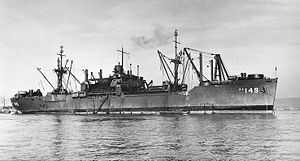 USS Audubon (APA-149) in San Francisco Bay, late 1945 or early '46 | |
| Career (US) | |
|---|---|
| Ordered: |
as type VC2-S-AP5 MCV hull 814 |
| Laid down: | 21 October 1944 |
| Launched: | 3 December 1944 |
| Acquired: | 19 December 1944 |
| Commissioned: | 20 December 1944 |
| Decommissioned: | 19 February 1946 |
| Struck: | 1946 |
| Fate: | scrapped, 9 April 1973 |
| General characteristics | |
| Displacement: | 12,450 tons (full load) |
| Length: | 455 ft 0 in (138.68 m) |
| Beam: | 62 ft 0 in (18.90 m) |
| Draught: | 24 ft 0 in (7.32 m) |
| Speed: | 19 knots |
| Complement: | 536 |
| Armament: | one 5” gun mount, twelve 40mm mounts, ten 20mm mounts |
USS Audubon (APA-149) was a Haskell-class attack transport acquired by the U.S. Navy during World War II for the task of transporting troops to and from combat areas.
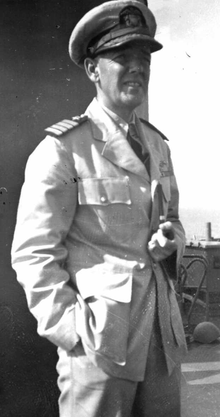
Audubon (MCV hull 814) was laid down on 21 October 1944 by the Kaiser Shipyards Co., Inc., Vancouver, Washington; launched on 3 December 1944; sponsored by Mrs. Fons Hughes; acquired by the Navy on 19 December 1944; designated APA-149; and commissioned on 20 December 1944, Capt. J. F. Goodwin in command.
World War II service
Following shakedown at San Pedro, California, the attack cargo ship sailed on 24 February for Pearl Harbor. Upon her arrival, her passengers disembarked, and she began loading more cargo. The attack transport got underway for Eniwetok on 29 March, reached that atoll on 6 April, and continued on to Ulithi on the 11th. There, Audubon took U.S. Army passengers and equipment on board and sailed for Okinawa. She anchored off Hagushi Beach on 26 April during the Battle of Okinawa and began discharging her passengers and cargo.
From Okinawa to Saipan to Guadalcanal to the Philippines
Audubon departed Okinawa on 30 April and headed for Saipan. After a brief stop there, the ship got underway for Hawaii. Having topped off her fuel and provisions at Pearl Harbor, she sailed on to San Francisco, California, where she arrived on 22 May. The ship was next ordered to Leyte, Philippines. She made intermediate stops at Pearl Harbor, Eniwetok, and Ulithi before reaching Leyte on 30 June. On 9 July, the ship proceeded to Guadalcanal to transport Army troops to the Philippines. Following a fuel stop at Hollandia, New Guinea, on 17 July, she arrived at Leyte on 26 July. After disembarking most of her passengers, the ship moved on to Cebu on 29 July and the remaining contingent left the ship. Audubon paused at Samar on 2 August, then got underway to return to the United States.
End-of-war operations
At the time of the Japanese capitulation, Audubon was in the vicinity of Pearl Harbor. The transport pulled into San Francisco on 19 August and began a period of voyage repairs. Upon their completion, Audubon joined Operation Magic Carpet and sailed on 31 August, headed for the Philippines. She arrived at Leyte on 18 September, then shifted to Samar on the 20th. While at Samar, Audubon developed mechanical problems which necessitated a period of drydocking. In early October, the ship was ordered back to California. On 22 October, she began an availability period at San Pedro, California.
Audubon sailed once again for the Philippines on 11 November. After negotiating heavy seas, the attack transport arrived at Manila on 1 December. Thirty-six hours later, she sailed with almost 2,000 passengers embarked and reached San Francisco on 20 December.
Audubon began 1946 making preparations for a trip to Yokosuka, Japan. However, just before she was due to leave, her orders were cancelled; and she sailed on 11 January for the east coast of the United States. She transited the Panama Canal on 20 January and reached Norfolk, Virginia, on 27 January 1945.
Post-war decommissioning
The ship was decommissioned on 19 February 1946, returned to the Maritime Commission on 13 March 1946, placed in the National Defense Reserve Fleet, and laid up in the James River, Virginia. She was sold on 9 April 1973 to the Union Minerals and Alloys Corp., of New York City, and scrapped.
Military awards and honors
Audubon earned one battle star for her World War II service
Citations and campaign ribbons
| American Campaign Medal | |
| Asiatic-Pacific Campaign Medal | |
| World War II Victory Medal[1] |
Photo gallery
-
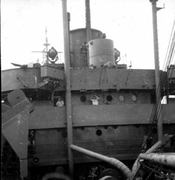
USS Audubon, aft view of #21 gun mount, Oct 1945
-
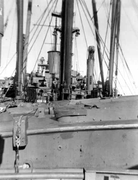
USS Audubon, ship's bow, view from aft gun platform, Oct 1945
-
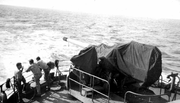
USS Audubon, five-inch gun on ship's fantail from the #45 gun turret, 1944
-
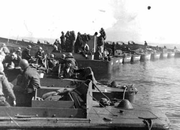
USS Audubon, landing craft fantail maneuvers, Feb 1945
-
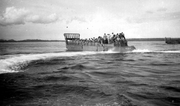
USS Audubon, LCM-3 Guiuan, Samar, Sep 1945
-
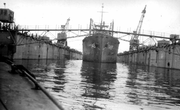
USS Audubon in floating drydock, Guiuan, Samar, Aug 1945
-
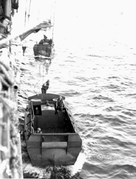
USS Audubon, lowering an LCVP from the port davit, Feb 1945
-
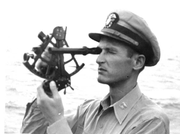
USS Audubon, Lt. Lakusta on the Signal Bridge using a sextant, 1945
-
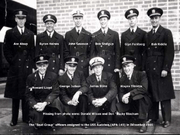
USS Audubon Boat Group Officers, Dec 1944
See also
References
- ↑ NavSource Online: Amphibious Photo Archive - APA-149 Audubon.
This article incorporates text from the public domain Dictionary of American Naval Fighting Ships.
External links
- USS Audubon, history.navy.mil.